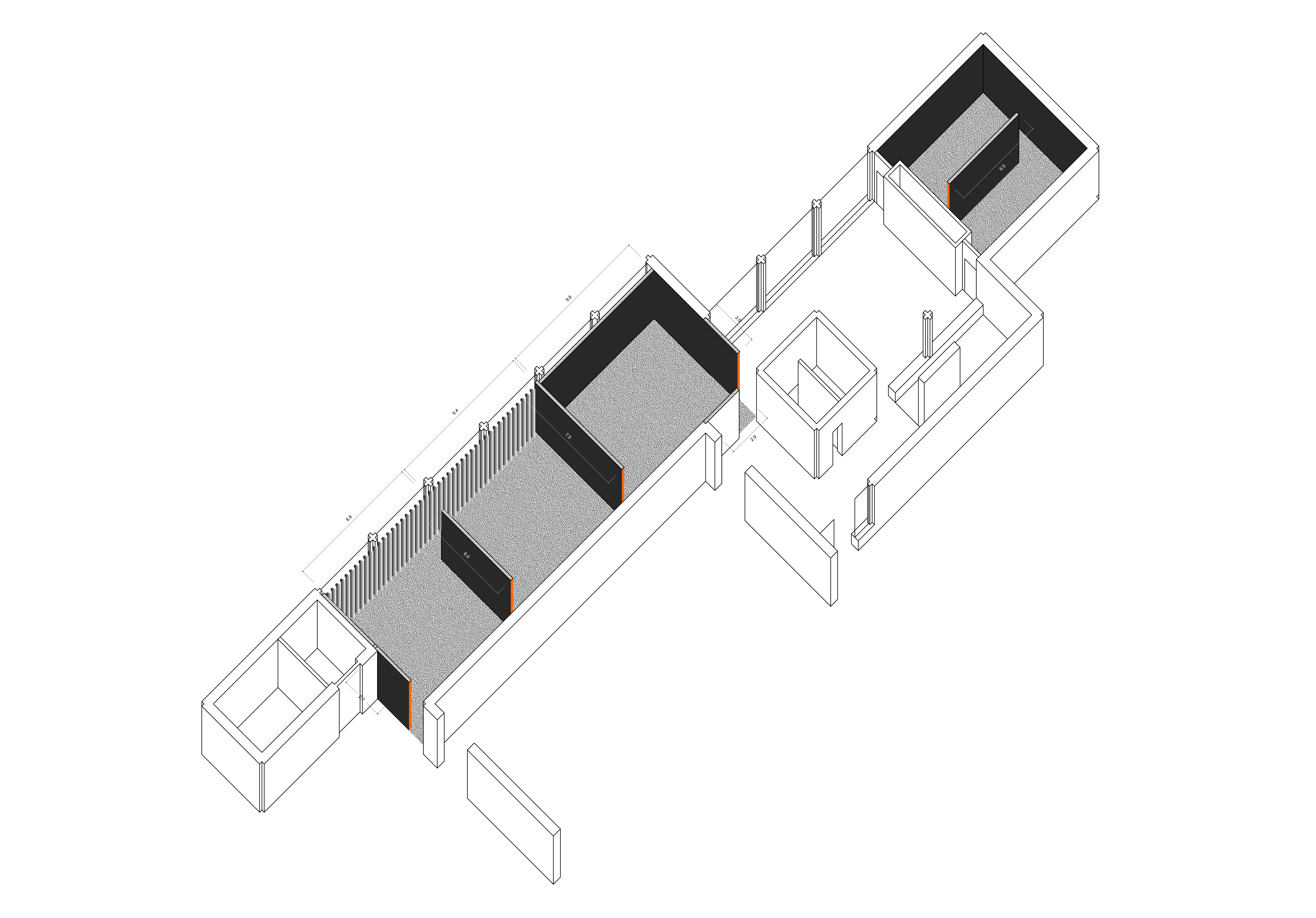nam june paik award - 2012
New media art requires specific settings for its presentation. The presence of sound and projected images asks for sonic qualities and darkness. The temporary exhibition hall from the Kunstmuseum in Bochum was transformed to allow this. Still, the use of a luxurious curtain and soft carpet – mixed with matt black paint and glossy orange colour – gave the show a rather comfortable and domestic feeling.

A little bit of Denmark in Bochum...Conceiving an award exhibition is a particularly tricky assignment. Firstly, the artists and their works are selected by a panel of experts, a topical connection between the works is not necessary (in this case it is the use of digital and electronic media). Secondly, the exhibition venue is chosen by the organisers and does therefore not genuine accommodate this type of artworks. Finally, you need to create some kind of cohesion between the artists without establishing a particular hierarchy, so as to give each of them an equal chance to win. In short, organising such an exhibition is a job for an architect (which, luckily, is my case) rather than for a curator, as you have to be attentive to space, details, lighting and views and, based on these various factors, try to create a presentation where every artist finds their right place before facing the second jury which, upon visiting the exhibition, will choose a winner.






One of the first things that you learn when living in Denmark in winter is that the house or the apartment plays a vital role in people's lives. Forget about balconies and terraces (which are not of much use at - 15°C): what matters in Scandinavia is the living room, its furniture and lighting. Nights are particularly long (or, in other words, days hardly existent) and the living environment must concur to avoid the depression that regularly haunts you. If there is one place where the German notion of "Gemütlichkeit" takes all its sense, it is in Copenhagen and the Scandinavian countries. This, then, is the underlying principle of the exhibition architecture in Bochum: thanks to a thick carpet on the floor and a long curtain obscuring the windows, the visitor's experience is more like an intimate encounter with works in a villa than a tour of a monumental and spectacular temple, the norm of contemporary museumship.
Each of the artists was awarded more or less the same surface, with the same length of wall, to install their work. To achieve this, we "simply" had to construct two new walls dividing the larger of the exhibition spaces into three squares of equal surface. The walls are set in a grid derived from the ceiling and thus appearing as an integrated part of the general architecture. This was a way of applying Mies van der Rohe's famous "Less is more" or, more to the point still, Dieter Rams's maxim "Weniger, aber besser". There was no need to be spectacular; rather, it was important to let the works speak for themselves. Each artist being in the same situation, they had to adapt to the given context. The overall presentation is characterised by a sense of "democracy" to the extent that everybody is treated equally. This quasipolitical aspect of the hanging, which seeks to strike a just balance between all the participants, also recalls the strange Law of Jante, itself an integral part of daily life in Scandinavia: no one individual is more important than the collective, and no one knows better than anyone else what needs to be done. Seen under this angle, organising an exhibition aiming to designate one work as the best proposition among many is almost an act of political incorrectness. But that's another story.
Thibaut de Ruyter